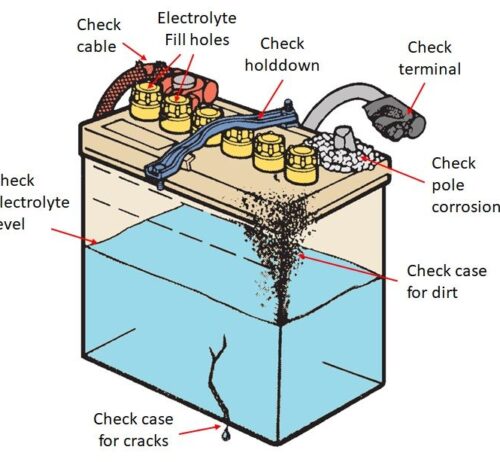Battery inspection
A battery inspection is carried out because the battery is the primary source of electricity on the vehicle when it is stationary and when starting the engine. Regular maintenance is important for correct and reliable operation. The battery should be inspected during each oil change, and especially in the fall before the arrival of the colder period when it is additionally loaded.
First, the age of the battery is checked by reading the date of manufacture and activation from the sticker.
Then the condition of the housing is inspected. Damage to the case leads to leakage of electrolytes and such a battery should be replaced.
Loose terminals and damaged poles on the battery create transient resistance and losses in the transmission of electricity. Make sure the outside of the case is dry and free of dirt. Dirt on the top of the case can cause the battery to self-discharge prematurely, as current “leaks” through the dirt. This mixture becomes conductive and drains the battery over time. Perform a leak test. If the battery or any of its associated parts are dirty or corroded, they should be removed and cleaned.








